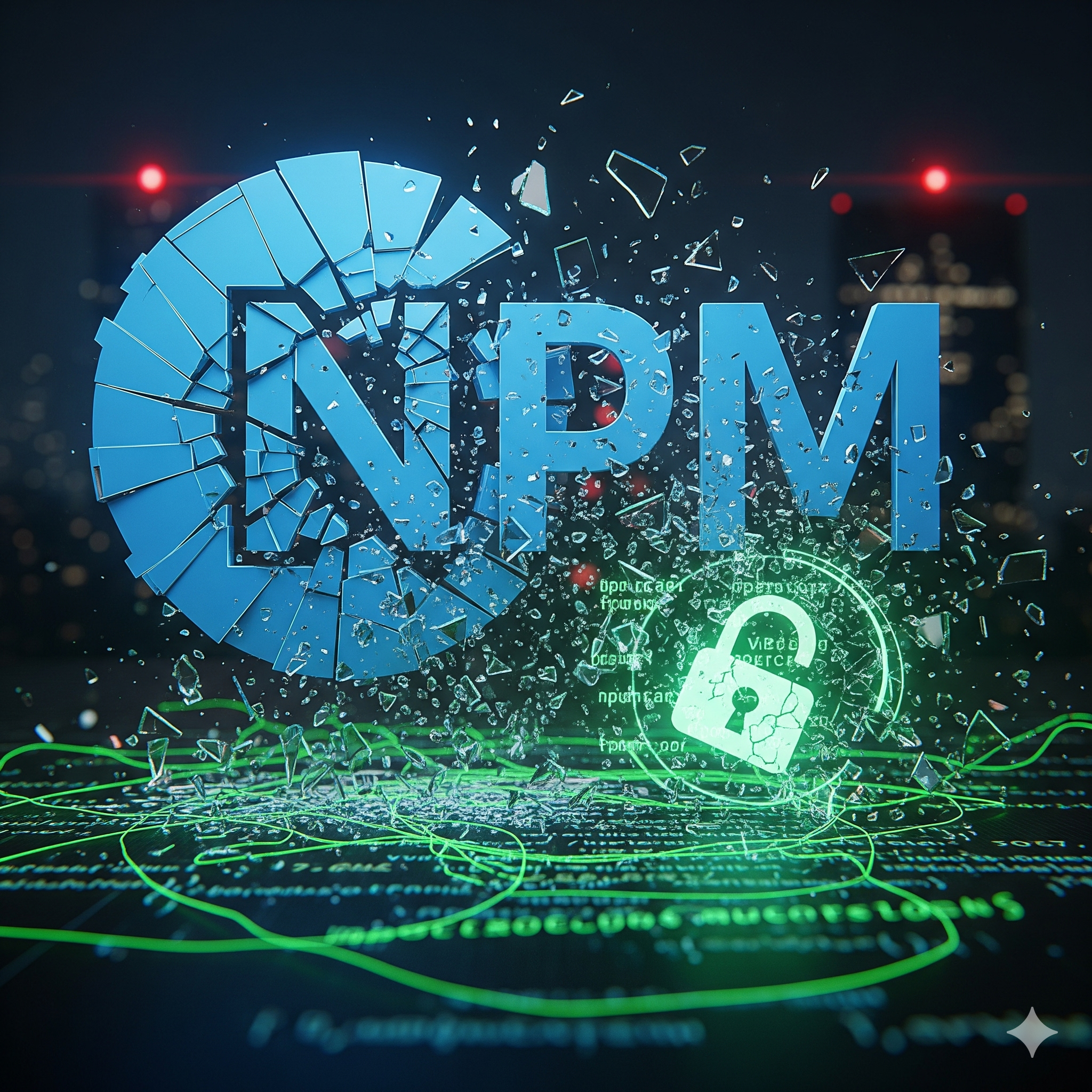NPM Supply Chain Breach: How a Phishing Scam Exposed Millions of Developers
When people think of software hacking, they often imagine highly sophisticated exploits or obscure technical flaws buried deep in the code. But the truth is, many of the biggest breaches begin with something much simpler: a phishing email. A recent incident involving the popular JavaScript package manager npm is a clear reminder of how fragile open-source ecosystems can be when attackers find the weakest link.
The Attack in a Nutshell
On September 8, 2025, security researchers reported that 18 npm packages—together responsible for more than 2 billion weekly downloads—had been tampered with. These weren’t niche tools tucked away in obscure projects. They were widely used libraries that developers reach for daily to handle common tasks like text formatting and font conversion, much like how platforms such as next-level streaming transform the digital experience in their own domains.
The problem wasn’t in the code itself but in the account of the person who maintained it. Josh Junon, the developer in charge of these packages, unknowingly handed over control of his npm account after falling victim to a carefully crafted phishing email.
The attacker disguised the email to look as if it came directly from npm’s official team. It warned about a security update requiring two-factor authentication. The sender address looked authentic at first glance but came from a spoofed domain—npmjs[.]help instead of the legitimate npm site. Once Junon followed the instructions, the attacker had full access to his account.
From there, it was only a matter of time. The hacker swapped out safe package versions with malware-laced updates. Hidden in the code was a script that targeted cryptocurrency transactions, silently rerouting payments from unsuspecting victims to wallets under the attacker’s control.
Why This Breach Stands Out
It’s easy to brush this off as just another hack in a long line of supply chain incidents, but the scale and method make it especially concerning.
| Factor | Details | Why It Matters |
|---|---|---|
| Number of packages | 18 npm modules | Many of them essential building blocks for apps and websites |
| Download volume | Over 2 billion weekly downloads | Millions of developers and end-users potentially exposed |
| Attack method | Phishing email | Shows how low-tech attacks still succeed against skilled developers |
| Malware objective | Steal cryptocurrency by hijacking browsers | Financially motivated and difficult to trace |
| Exposure window | Limited before detection | Damage was reduced, but it could have been much worse |
Security company Aikido described the incident as “the largest supply chain compromise in npm history.” Even though downloads of the malicious versions remained relatively low, the fact that a phishing trick could so easily lead to such a massive exposure is unsettling.
The Security Community Reacts
The response from researchers and the open-source community was swift. Once the problem was identified, the infected packages were pulled down and security alerts were pushed to developers who might have installed them.
Interestingly, while the breach was taken seriously, experts noted that the malicious code itself was not highly advanced. Security researcher Florian Roth went so far as to call the payload “amateur-grade.” In other words, the attacker had gained powerful access but lacked the sophistication to maximize its impact.
That may sound reassuring, but the broader takeaway is far more concerning. If a basic phishing campaign can lead to the compromise of packages downloaded billions of times, what happens if a well-resourced group uses similar methods with more sophisticated malware?
As Socket Security put it: “All it takes is one compromised maintainer for the malware to spread downstream.”
What This Means for Open-Source Development
Open-source software is the backbone of modern development. Most applications today are not built entirely from scratch; they rely heavily on libraries and packages written by others. This system works because of trust and community collaboration—but that trust can also be its weakness.
Few developers take the time to inspect every line of code in the packages they install. Instead, they rely on reputation and popularity as indicators of safety. But this attack shows how quickly that trust can be exploited.
In fact, the npm ecosystem has seen similar incidents before, though on a smaller scale. In 2022, for example, a malicious package disguised as a popular library managed to stay undetected long enough to reach thousands of users. Each new event adds weight to the argument that supply chain security needs far more attention than it currently gets.
Lessons for Developers and Maintainers
So, what can developers and organizations learn from this breach? The solutions aren’t perfect, but there are steps that can make attacks like this harder to pull off.
- Always verify suspicious emails. A quick glance at the sender’s address can save you from a costly mistake. Attackers rely on urgency and fear to push victims into clicking without thinking.
- Adopt stronger authentication. Instead of relying solely on SMS or email-based two-factor authentication, maintainers should use hardware keys or authenticator apps, which are far less vulnerable to phishing.
- Use package monitoring tools. Security platforms like Socket or Aikido can alert teams when a package behaves unexpectedly, such as when new versions introduce suspicious code.
- Apply zero-trust principles. Treat every update—even from trusted sources—as potentially harmful until verified. Automated dependency scanning can help reduce risk.
- Educate maintainers. Not every open-source contributor is a security expert. Offering training and resources can prevent future slip-ups.
Conclusion
The npm supply chain attack of September 2025 is more than a one-off security scare—it’s a wake-up call. It proved that even the most widely trusted software ecosystems can be compromised through something as ordinary as a phishing email. While the specific malware may have been unsophisticated, the method was effective enough to expose billions of downloads to potential risk.
For developers and organizations, the lesson is clear: vigilance has to extend beyond writing secure code. Phishing awareness, stronger authentication, and proactive monitoring of dependencies are now non-negotiable parts of protecting the software supply chain.
In the end, this incident isn’t just about npm or cryptocurrency theft—it’s about the fragility of trust in open-source software. The stronger that trust is reinforced with security best practices, the safer the entire ecosystem will be.
FAQS
Q1: What happened in the npm supply chain attack of September 2025?
Attackers compromised 18 popular npm packages, with over 2 billion weekly downloads, by phishing a maintainer’s account and injecting malware into updated versions.
Q2: How did the attackers gain access to the npm packages?
The attacker sent a phishing email disguised as an official npm security alert. The maintainer followed the fake instructions, unknowingly handing over account access.
What was the purpose of the malicious code in the npm packages?
The malware was designed to hijack cryptocurrency transactions by silently redirecting payments to wallets controlled by the attacker.
Q4: How many developers and users were affected by this breach?
The packages involved were downloaded billions of times weekly, meaning millions of developers and end-users were potentially exposed before detection.
Q5: Was the malware used in the npm breach advanced?
No. Security researchers described the payload as “amateur-grade.” The real danger came from the large-scale exposure, not the sophistication of the malware.







